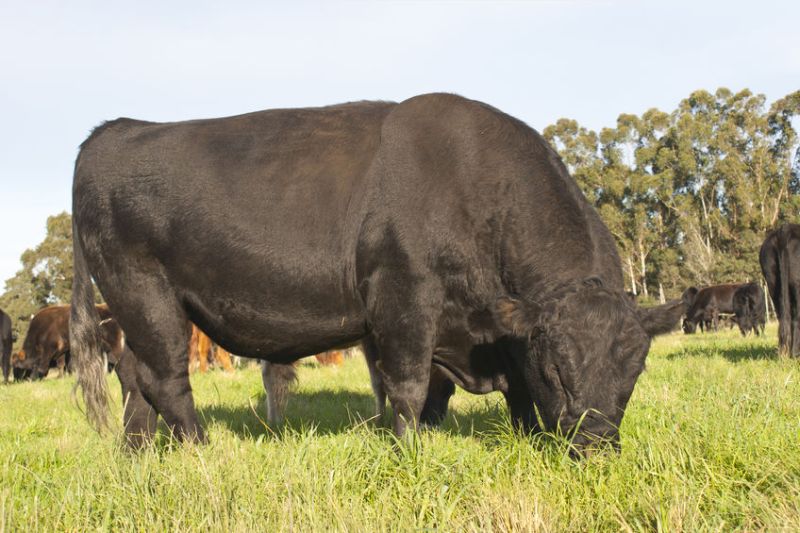
More than 60 percent of buyers said they aren’t always able to find what they’re looking for in a stock bull or AI sire, new research suggests.
The survey, which was completed by 156 beef farmers, also found a lack of information on estimated breeding values (EBVs) has led to confusion in the buying process.
Stock bulls are a huge investment for commercial suckler herds, and farmers see it as vital to know what they pay for.
The AHDB Beef & Lamb survey asked farmers to gauge how they are choosing bulls, what is important in a bull and what the industry needs to do to improve the quality of stock bulls and AI sires on the market.
Respondents had a range of herd sizes, with 48 per cent owning between 30 and 100 suckler cows and 32 per cent having more than 100 suckler cows.
The majority stated they would normally pay between £3,000 and £5,000 for a bull, with 15 per cent of farmers paying £10,000 per animal.
The top reason given for not being able to find livestock with the characteristics required was a lack of ‘well-rounded sires’, with farmers wanting a better balance between calving and terminal figures.
This was followed by poor calving ease figures and health status, with 13 percent believing there was a general lack of good quality stock bulls available.
However, the definition of a ‘well-rounded’ sire can be interpreted in a number of ways depending on what traits the buyer is looking for.
According to AHDB's research, this demonstrates the need for more information on EBVs and EBVs based on new data sources.
It also shows the importance in understanding how to interpret the information to avoid potentially overpaying for bulls with desirable EBVs in traits that are less relevant to specific breeding goals.
National Beef Evaluations
To enhance the information available to bull buyers, AHDB has developed the National Beef Evaluations.
These are a new set of EBVs capturing carcase trait information including days to slaughter, carcase weight, conformation, fat class and average daily carcase gain.
The main focus area for farmers buying a bull is genetic figures, with 80 percent of respondents saying they looked at EBVs when buying stock bulls or semen.
Reasons given by the one in five farmers who don’t use EBVs included figures not being available, not understanding the figures and not seeing the value in the information.
There was also some concern over potential manipulation of EBVs by overfeeding.
Amy Hughes, Knowledge Exchange Manager at AHDB, said there’s a 'general misconception' among beef producers that breeding values can be easily manipulated.
“However, EBVs are generated by BLUP analysis – the same technology that’s used for a wide variety of genetic evaluations including corn, grass, dairy cattle and pine trees.
“The technology is well tested globally and has built in processes for adjusting data for any management effects such as feeding level,” she said.
Contemporary groups
The data behind a bull’s EBV is taken from his family pedigree and on-farm recordings from a variety of farming systems, called contemporary groups.
This enables adjustments to be made based on individual farm management such as feeding regimes.
If a particular bull has only been used on one farm, it’s likely his grandfather or great grandfather has been used across different systems, allowing the technology to generate EBVs regardless of feed.
Ms Hughes added: “We acknowledge having trust in the breeder is an important part of the buying process.
“And though farmers should use data to help inform their decisions, open and honest conversations between breeders and buyers can help you find cattle with the characteristics you’re looking for more quickly.”
